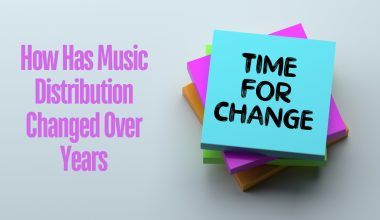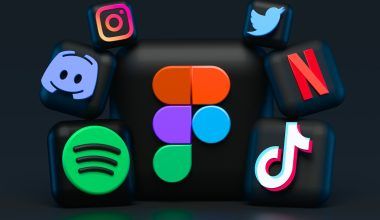YouTube is a popular platform where creators can share their videos with a global audience. While it’s a great place to share content, many creators also use it to earn money. Understanding how YouTube royalties work can be a bit complicated, but it’s essential for anyone looking to turn their channel into a source of income. In this blog, we’ll explore how YouTube royalties work, how creators can maximize their earnings, and the different methods YouTube uses to pay its creators.
What Are YouTube Royalties?
YouTube royalties refer to the payments that content creators receive from YouTube based on the views their videos get. These royalties are part of YouTube’s broader monetization system, which includes ad revenue, subscription services, and more. When viewers watch ads on videos or subscribe to premium services, creators earn a share of the revenue.
How YouTube Royalties Work
To understand how YouTube royalties work, it’s important to know the basics of YouTube’s monetization model. YouTube generates revenue primarily through advertisements shown on videos. A portion of this revenue is then shared with the content creators whose videos host these ads. Here’s a breakdown of the main components:
1. YouTube Partner Program
The YouTube Partner Program (YPP) is the primary way for creators to start earning money on YouTube. To join, creators must meet certain criteria, such as having at least 1,000 subscribers and 4,000 watch hours in the past 12 months. Once accepted, creators can monetize their videos through ads, channel memberships, Super Chat, and YouTube Premium revenue.
2. Ad Revenue
Ads are the most common way to earn YouTube income. There are different types of ads, such as display ads, overlay ads, skippable video ads, and non-skippable video ads. When viewers watch these ads, the revenue generated is split between YouTube and the creator. Typically, creators receive 55% of the ad revenue, while YouTube keeps 45%.
YouTube Premium is a subscription service that allows users to watch videos without ads, access exclusive content, and use other features like background play. Creators earn YouTube royalties from YouTube Premium based on how much time premium subscribers spend watching their content. This means that even without ads, creators can still earn YouTube revenue.
4. Super Chat and Super Stickers
Super Chat and Super Stickers are features that allow viewers to pay to have their messages highlighted during live streams. This provides an additional revenue stream for creators during live broadcasts. The earnings from Super Chat and Super Stickers are also considered YouTube income.
5. Channel Memberships
Channel memberships allow viewers to support their favorite creators by paying a monthly fee. In return, members get perks like exclusive badges, emojis, and access to members-only content. This recurring revenue adds to the creator’s YouTube earnings.
YouTube Music Royalties
YouTube Music Royalties work slightly differently from regular video royalties. When music is used in videos, the rights holders of the music (such as record labels, artists, and songwriters) are entitled to a share of the revenue. YouTube uses a system called Content ID to identify copyrighted music and manage royalties accordingly.
Content ID
Content ID is a tool used by YouTube to automatically identify and manage copyrighted content. When a video is uploaded, Content ID scans it for any music or other copyrighted material. If it finds a match, the rights holder can choose to monetize the video by claiming a portion of the ad revenue. This ensures that artists and other rights holders receive YouTube Music Royalties for their work.
AdSense
AdSense is the platform through which YouTube pays its creators. Once you’ve linked your YouTube account to AdSense, your YouTube earnings will be transferred to your AdSense account, which you can then withdraw to your bank account. This system ensures that all YouTube revenue is properly tracked and paid out to creators.
CPM and RPM
Two important metrics for understanding YouTube income are CPM (Cost Per Mille) and RPM (Revenue Per Mille). CPM refers to the cost per thousand ad impressions, indicating how much advertisers are willing to pay for ads on your videos. RPM, on the other hand, shows the actual revenue you earn per thousand views after YouTube’s share is deducted. These metrics help creators understand their earning potential and optimize their content for better YouTube revenue.
How to Maximize YouTube Royalties
To maximize your YouTube royalties, you need to focus on creating high-quality content that attracts viewers and encourages engagement. Here are some tips to help you boost your YouTube earnings:
1. Create Engaging Content
The more engaging your content, the more likely viewers are to watch your videos from start to finish. This increases the chances of ads being shown, which in turn boosts your YouTube income. Use compelling thumbnails, interesting titles, and keep your content fresh and relevant to attract more viewers.
2. Optimize for SEO
Search engine optimization (SEO) is crucial for getting your videos discovered on YouTube. Use relevant keywords in your titles, descriptions, and tags to improve your videos’ visibility in search results. This will help attract more viewers and increase your YouTube revenue.
3. Promote Your Videos
Promoting your videos on social media and other platforms can help you reach a wider audience. The more people who watch your videos, the higher your YouTube earnings. Share your content on Facebook, Twitter, Instagram, and other social networks to drive traffic to your YouTube channel.
4. Engage with Your Audience
Building a strong relationship with your audience can lead to higher YouTube royalties. Respond to comments, ask for feedback, and create content based on viewer suggestions. This engagement helps build a loyal fanbase that will consistently watch and share your videos.
5. Utilize All Monetization Options
Take advantage of all the monetization options available through the YouTube Partner Program. This includes ads, YouTube Premium, Super Chat, and channel memberships. Diversifying your revenue streams ensures that you maximize your YouTube income.
Understanding YouTube Music Earnings
YouTube Music Earnings are an important part of the overall revenue for creators who use music in their videos. Here’s a deeper look at how these earnings are calculated and distributed:
YouTube Revenue Sharing
When music is used in videos, YouTube shares the ad revenue with the music rights holders. This includes record labels, artists, and songwriters. The exact share can vary, but typically, the rights holders receive a significant portion of the ad revenue generated from videos using their music.
Ad Revenue Split
The ad revenue split for videos using copyrighted music involves multiple parties. YouTube takes its usual 45% cut, and the remaining 55% is divided between the content creator and the music rights holders. This means that creators may receive a smaller share of the revenue if they use copyrighted music in their videos.
As mentioned earlier, YouTube Premium also contributes to YouTube Music Earnings. When premium subscribers watch videos that include music, a portion of their subscription fee is allocated to the rights holders based on the total watch time. This ensures that music creators are compensated even when viewers don’t see ads.
Challenges and Considerations
While earning YouTube royalties can be lucrative, there are some challenges and considerations to keep in mind:
Copyright Issues
Using copyrighted music without permission can lead to your videos being demonetized or removed. To avoid this, use royalty-free music or obtain proper licenses for the music you want to use. This will ensure that your videos remain monetized and you continue to earn YouTube income.
Ad Blockers
Ad blockers can significantly reduce your YouTube earnings by preventing ads from being shown on your videos. While there’s not much you can do about viewers using ad blockers, you can focus on other revenue streams like YouTube Premium and channel memberships to mitigate the impact.
Fluctuating YouTube Revenue
YouTube revenue can fluctuate due to various factors, such as changes in ad rates, viewer engagement, and seasonal trends. It’s important to diversify your income sources and not rely solely on ad revenue to ensure a steady stream of YouTube royalties.
Understanding Analytics
YouTube provides detailed analytics to help creators understand their YouTube income. By analyzing metrics like watch time, viewer demographics, and ad performance, you can make informed decisions to optimize your content and increase your YouTube earnings.
Conclusion
Understanding how YouTube royalties work is crucial for any content creator looking to monetize their channel. By leveraging the YouTube Partner Program, optimizing your content for SEO, and engaging with your audience, you can maximize your YouTube income. Additionally, understanding YouTube Music Royalties and the role of Content ID can help you navigate the complexities of using music in your videos.
While there are challenges like copyright issues and fluctuating revenue, diversifying your income streams and staying informed about YouTube’s policies can help you build a sustainable source of YouTube earnings. Whether you’re just starting out or looking to boost your existing channel, focusing on these strategies will ensure that you make the most of your efforts and achieve success on YouTube.
By consistently creating high-quality content, optimizing for SEO, promoting your videos, and utilizing all available monetization options, you can turn your passion for video creation into a profitable venture. Remember, the key to success on YouTube is not just about earning YouTube royalties, but also about building a loyal audience and delivering value through your content.
For further reading, explore these related articles:
- Deliver My Tune’s Exciting New Services!
- How to Submit Your Music on Spotify Playlists
- How to Get Your Music Played on Radio
For additional resources on music marketing and distribution, visit Deliver My Tune.






